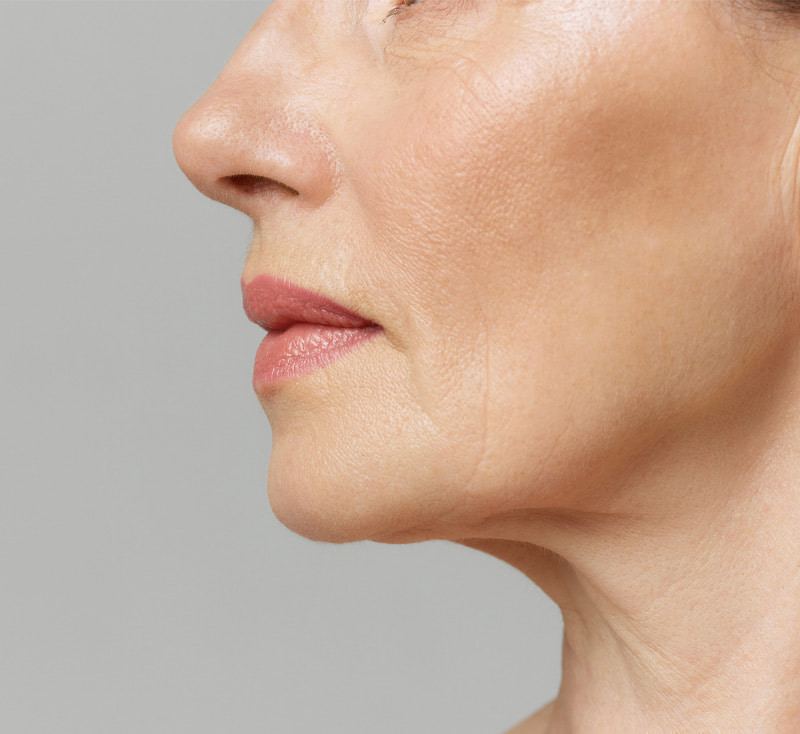



Patients often ask me, “Am I too young for a facelift?” or “Should I wait until I’m older?” And I get it—the timing can feel confusing, especially as more celebrities and influencers openly share their early surgical journeys. But here’s the truth as I see it: the idea of early cosmetic surgery needs to be better defined for people navigating their own aging and anti-aging timeline.
Lately, I’ve even heard the term preventive cosmetic surgery - a phrase that, no matter how you slice it, is conceptually flawed. Cosmetic surgery isn’t about stopping aging or permanently defying gravity. That’s not possible. It’s about making a meaningful, visible improvement.
The goal of any facial rejuvenation procedure, especially a facelift, is not just subtlety. Yes, natural results matter deeply. But natural should never mean invisible. You should see a real, noticeable difference. When done at the right time, a facelift offers results that are worth the time, trust, and investment.
Mild aging doesn’t mean invisible aging. It refers to those early, yet unmistakable signs when the skin begins to lose its firmness and structure. You might catch a glimpse of subtle jowls in certain lighting or notice them when looking down at your phone. Maybe faint neck bands have appeared at rest, ones you’re sure weren’t there a few years ago. These changes are real, visible, and understandably unsettling for many of my patients.
When these signs first show up, the natural instinct is to reach for non-surgical options: dermal fillers, neurotoxins, or energy-based tightening devices. And I understand that impulse. When a problem seems mild, it feels logical to pursue a mild solution. Like a small scratch on a new car’s paint job: you’d try to buff it out rather than repaint the whole thing.
But when it comes to aging and anatomy, the issue is more complex. These early signs may seem superficial, but they’re often rooted in deeper structural changes. Unfortunately, no amount of skin-polishing, collagen stimulation, or muscle relaxation can lift or reposition tissues that have already started to descend.
I often refer to this as the “crack in the windshield”: you can try to buff it out, but the damage is already beneath the surface, and over time, it spreads. There’s no true patch for structural descent. While non-surgical treatments can be helpful, especially for issues like volume loss, fine lines, sun damage, or hollow areas, they tend to fall short when asked to lift, tighten, or correct true laxity. And when expectations don’t match outcomes, disappointment follows.
The encouraging shift in our field is that we’re now more willing to address these issues earlier. Why? Because timely intervention can actually change the trajectory of aging in a way that’s both visible and worthwhile for the patient.

A youthful jawline and neck are characterized by a soft, clean silhouette with a distinct shadow beneath the jawline, extending from ear to ear.
Patients are often surprised when I recommend surgery as early as their 40s. At first, it might sound aggressive—but the reasoning is simple. If the skin is visibly sagging, if soft tissue has shifted lower on the face, or if neck bands and jawline laxity are already present, surgery offers a direct, long-lasting solution. It addresses the true structural changes of aging: muscle descent, shifting fat pads, and tissue laxity, in a way that no filler or device can replicate.
Where I often part ways with media narratives and trending theories is around the idea of preventing aging. In fields like surgical oncology, prevention can be possible through genetic testing and serious risk assessment. And even then, surgery is a complex and deeply personal decision. Cosmetic surgery, by contrast, cannot prevent or delay aging. Your anatomy will continue to mature every day you’re alive. Tightening a face that hasn’t begun to loosen won’t slow time.
I don’t support operating too early or treating patients who don’t truly need it. But I also won’t recommend short-term fixes when they fail to deliver meaningful improvement. My goal is always the same: to achieve visible, lasting rejuvenation, even when signs of aging are still considered “mild.”
When that moment arrives, partnering with a New York facial cosmetic surgeon helps align expectations, recovery, and results so the journey feels purposeful and rewarding.

Don’t believe everything you hear or read. I don’t engage in celebrity speculation—many public figures are navigating real medical decisions under intense scrutiny. That takes courage, not more commentary.
It’s easy to see why “early” cosmetic procedures have gained momentum. Celebrities often claim to rely on gentle, natural measures yet their transformations suggest otherwise. Experts weigh in with detailed theories, only for the celebrity to credit “green veggies” for their sculpted jawlines. The truth is, celebrities have learned how to master the art of appearing youthful: good lighting, flattering angles, careful posture, impeccable makeup. But eventually, that effort becomes exhausting and a more permanent solution is chosen.
A subtle surgery to clean up mild laxity along the jawline or neck can free someone from that constant choreography. It allows them to stay on camera longer, appear in more candid moments, and face the public with renewed confidence. The decision to have surgery likely happens before severe aging becomes obvious because waiting too long would make the change harder to hide.
But as a surgeon who values honesty and clarity, let me be clear: operating before any visible signs of aging appear makes little sense. Without visible changes, how can we justify the recovery, the scars, the risks? And perhaps,most importantly, how can we celebrate meaningful improvement?
Facial cosmetic surgery is not a race against aging or a quest to stay forever young. It’s about looking refreshed, visibly rejuvenated, and yes - younger - once true signs of aging have begun to show. The results should be seen, felt, and genuinely appreciated.

Mild signs of gravitational aging include neck bands, some skin accumulation under the chin, and varying degrees of poochy jowls just above the jawline. These features become more pronounced flexing the neck and looking downward.
So, when is the right time? In my experience, the ideal window for a first-time facelift typically falls between the early 40s and mid-50s. That range isn’t rigid; it depends entirely on individual anatomy and the nature of each patient’s aging concerns. I’ve seen patients in their 30s who look a decade older on clinical exam, and others in their 50s who appear much, much younger. The truth is, the biology of aging is complex, multifactorial, unpredictable, and deeply personal.
A facelift performed within this window is neither premature nor too late. My youngest facelift patient was 39; my oldest was 88-vibrant, healthy, and not on a single medication. For each of them, it was the right time. They made the decision based on how they felt and what they saw, not a number on a calendar. My goal with every facelift is to deliver visible, meaningful results through true structural correction. If I had a preference, it would be to avoid waiting for aging to become severe or overwhelming.
Delaying too long often means a more extensive procedure, oftentimes requiring adjunctive surgeries like eyelid lifts, brow repositioning, lip reshaping, or fat grafting to harmonize the overall result. On the flip side, chasing minor improvements with repeated non-surgical treatments that never quite deliver can become emotionally frustrating and financially draining. The goal is to intervene when the impact is high and the experience is rewarding, both aesthetically and personally.
As much as I champion natural outcomes, I always remind my patients that natural does not mean invisible. My facelifts create visible improvement with a more refined jawline, smoother neck contours, a lifted midface, and skin that looks clearly tighter and more youthful. The result should leave no doubt that something beautiful has been done. If you have to look twice to see it, then what have you (aka we) really achieved?
The technique behind the facelift matters. My preference for the deep plane approach comes from a place of anatomical precision and durability of results. This method lifts and repositions the deeper layers of the face, including muscles, fat, and ligaments, as one cohesive unit. It addresses aging where it actually happens. Unlike superficial lifts or non-surgical treatments, the changes achieved with a deep plane facelift are structural, natural in appearance, and truly enduring.

To me, ‘natural’ isn’t about more or less work’; it’s about doing the right amount to address the specific concern. Like any treatment, whether surgery, filler, toxin, or laser, overdoing a good thing can lead to unnatural, bizarre results.
Deciding when to have a facelift should always involve honest conversations with your surgeon. During consultations, I encourage open dialogue about visible aging, expectations, and goals. If you find yourself looking in the mirror or at photos and frequently thinking about sagging skin or mild jowling, it is time to consider surgical options.
Ultimately, the right time is when signs of aging become consistently noticeable and when you are ready for genuine improvement–not subtle tweaks, not barely perceptible results, but a transformation that clearly reflects how vibrant and youthful you still feel inside.
If you are noticing mild to moderate facial aging and want a truly noticeable improvement, a deep plane facelift might be the inevitable solution. As always, my goal is your complete satisfaction and confident, tangible rejuvenation.
At RENATA Facial Cosmetic Surgery, we prioritize privacy. While many Before & After photos are featured on our website and social media channels, we understand not everyone wishes to share them publicly. To respect our patients’ unique preferences, we invite you to explore a more comprehensive Before & After gallery during your consultation in our office.







Life can be demanding, and we understand. For patients who may be traveling, preparing for a last-minute occasion, or simply looking for a more exclusive experience without any inconvenience or delays, we are pleased to offer preferred patient scheduling. Patients may undergo a personal consultation as well as tailored cosmetic treatments during evening hours or weekends. Appointments are required and premium rates apply. Please call our office to inquire about preferred patient scheduling and allow us to create an exceptional experience just for you.
Request a ConsultationAt RENATA Facial Cosmetic Surgery, patients receive excellent customer service, communication, personal attention, and scheduling flexibility. Located in the historical and breathtaking waterfront neighborhood of DUMBO, Brooklyn in New York City, our office serves local neighborhoods including Brooklyn Heights, Park Slope, Williamsburg, and Cobble Hill, as well as Manhattan and New York City at large.
Our office location is:
58 Prospect Street, Brooklyn, NY 11201